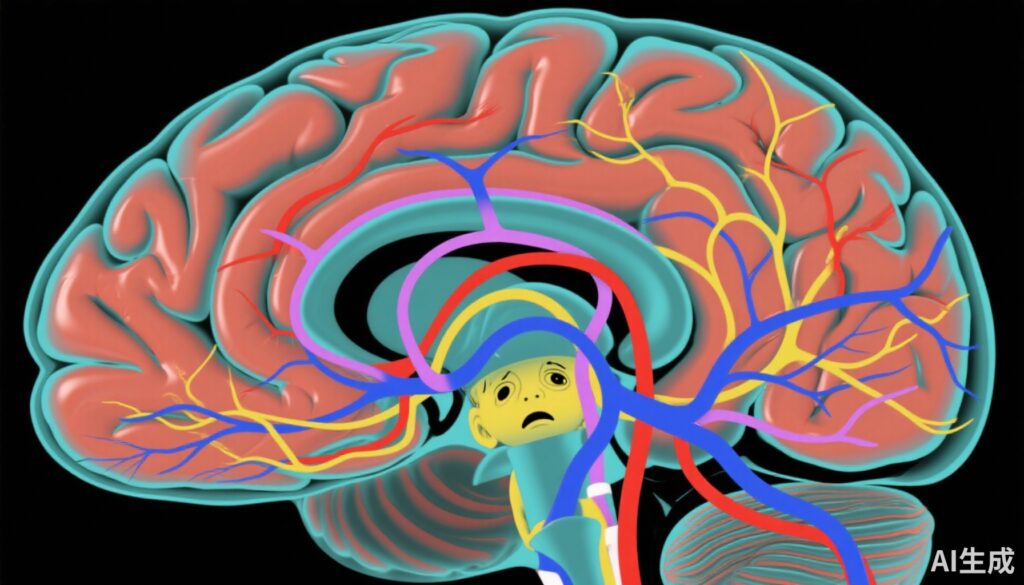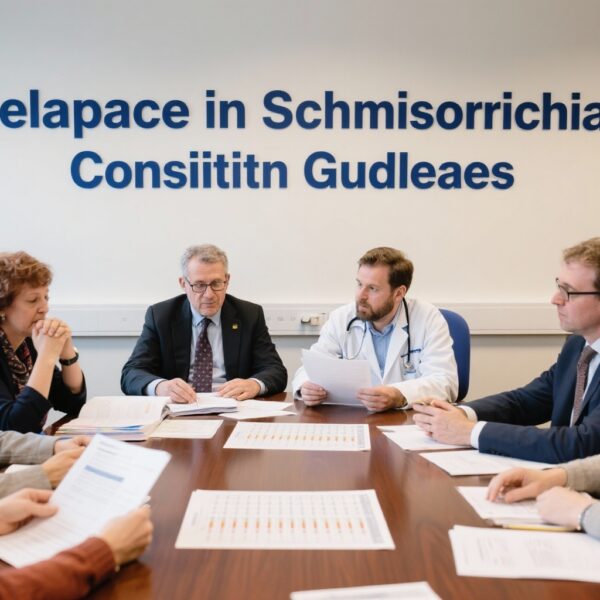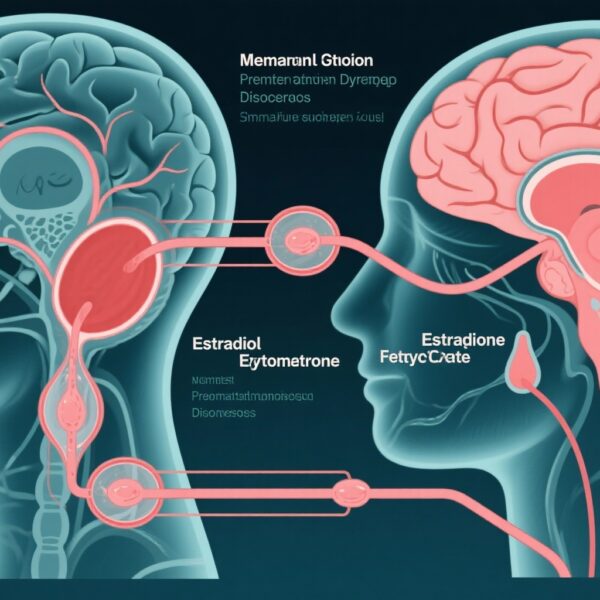Highlight
1. Neural efficiency, measured as similarity in brain network connectivity between rest and threat-related tasks, shows reduced values in youths with anxiety disorders compared to healthy controls.
2. Reduced neural efficiency correlates with both anxiety diagnosis and symptom severity, indicating its potential as a dimensional biomarker.
3. Baseline neural efficiency predicts response to exposure-based cognitive-behavioral therapy (CBT), with lower efficiency associated with poorer treatment outcomes.
4. Neural efficiency demonstrates moderate test-retest reliability over 11 to 18 weeks in healthy youths, supporting its stability as a biomarker candidate.
Study Background
Pediatric anxiety disorders are among the most prevalent psychiatric conditions in youths and are strong predictors of adult psychopathology. Despite their high prevalence and significant impact on functioning, current treatments, including cognitive-behavioral therapy (CBT), achieve sustained remission in fewer than half of affected youths. This highlights a critical unmet need for mechanistically informed biomarkers that can improve diagnosis, predict treatment response, and guide personalized interventions to enhance therapeutic efficacy in this population.
Study Design
This research enrolled 103 youths diagnosed with anxiety disorders (mean age 12.5 years, SD=2.91; 62% female) and compared them to 103 age-matched healthy controls without psychiatric diagnosis (mean age 13.4 years, SD=2.58; 53% female). Participants underwent functional magnetic resonance imaging (fMRI) scans during two conditions: resting state and an active dot-probe task involving threatening faces, a well-established paradigm probing threat processing.
Neural efficiency was operationalized as the partial correlation between intrinsic (resting state) and task-evoked functional connectivity patterns across the whole brain. This metric captures the degree to which brain network configurations during threat processing resemble baseline resting connectivity, with higher similarity indicating more efficient neural reconfiguration.
The study included test-retest reliability assessments at 4 months (11–18 weeks) in healthy youth to evaluate biomarker stability. Additionally, the anxious participants—80 of whom subsequently received exposure-based CBT—were examined longitudinally to determine whether neural efficiency at baseline predicted treatment response.
Key Findings
1. Test-Retest Reliability: Neural efficiency showed acceptable stability over 4 months in healthy youths, with an intraclass correlation coefficient (ICC) of 0.65, indicating moderate reliability for clinical biomarker considerations.
2. Neural Efficiency and Anxiety Diagnosis: Comparisons revealed significantly reduced neural efficiency in youths with anxiety disorders relative to controls (t=2.62; Cohen’s d=0.29), supporting its role as a state or trait marker of pediatric anxiety.
3. Dimensional Symptom Associations: Neural efficiency negatively correlated with anxiety symptom severity (r=-0.18), underscoring its relevance across diagnostic boundaries and potential use as a dimensional biomarker reflecting underlying neural dysfunction.
4. Prediction of CBT Response: Importantly, baseline neural efficiency did not change after CBT but significantly predicted treatment response magnitude. Lower initial neural efficiency was associated with poorer outcomes (β = -11.88, χ² = 9.20) in the subset of 80 youths undergoing therapy, indicating prognostic utility for guiding personalized treatment planning.
Expert Commentary
The concept of ‘neural efficiency’—how flexibly the brain can reconfigure its functional networks in response to threat stimuli—offers a promising neurobiological target for understanding anxiety. Reduced neural efficiency may reflect impaired neural adaptability or excessive intrusion of threat-related processes, consistent with cognitive theories of anxiety that posit aberrant threat monitoring and processing as central features.
These findings align with emerging research identifying network-level biomarkers in psychiatric disorders that transcend traditional symptom-based categories, potentially enabling more objective and mechanistically informed diagnostic frameworks.
While the test-retest reliability and predictive validity presented are encouraging, the effect sizes are modest, and further replication in larger, diverse cohorts is essential before clinical implementation. Additionally, longitudinal studies investigating whether interventions can enhance neural efficiency and subsequently improve therapeutic outcomes could deepen mechanistic insights and treatment innovation.
It is also important to consider individual variability in developmental trajectories and comorbidities that might influence neural efficiency metrics. Multi-modal neuroimaging and integration with genetic, behavioral, and environmental data would enrich biomarker characterization.
Conclusion
This study identifies reduced threat-related neural efficiency, defined as diminished similarity in functional brain network connectivity between resting state and processing of threatening stimuli, as a potential biomarker for pediatric anxiety disorders. Neural efficiency shows promise in both diagnostic classification and as a predictor of response to CBT, addressing significant gaps in pediatric anxiety care.
Incorporating neural efficiency assessments into clinical protocols could facilitate stratification of anxious youths, guiding targeted intervention strategies and informing the design of novel therapeutics aimed at enhancing brain network adaptability. Future work should focus on validating these findings across heterogeneous populations, exploring neural efficiency as an intervention target, and integrating biomarker data into precision psychiatry frameworks.
Funding and ClinicalTrials.gov
The original study was published in the American Journal of Psychiatry and supported by relevant institutional and research funding. The clinical trial registry information was not specified in the excerpt.
References
Linke JO, Naim R, Haller SP, Khosravi P, Scheinberg B, Byrne ME, Harrewijn A, Leibenluft E, Brotman MA, Winkler AM, Pine DS. Reduced Threat-Related Neural Efficiency: A Possible Biomarker for Pediatric Anxiety Disorders. Am J Psychiatry. 2025 Oct 8:appiajp20241043. doi: 10.1176/appi.ajp.20241043. Epub ahead of print. PMID: 41058235.
Additional relevant literature on neural efficiency and pediatric anxiety neuroimaging includes:
- Drysdale AT, Grosenick L, Downar J et al. Resting-state connectivity biomarkers define neurophysiological subtypes of depression. Nat Med. 2017 Jan;23(1):28-38.
- Price RB, Rasenick MM, Bailey RK. Modulating cortical oscillations with transcranial alternating current stimulation in psychiatric disorders. Front Psychiatry. 2020;11:513.
- Kumar P, Clark M. Clinical Medicine. 11th ed. Elsevier; 2019. Chapter on anxiety disorders.



